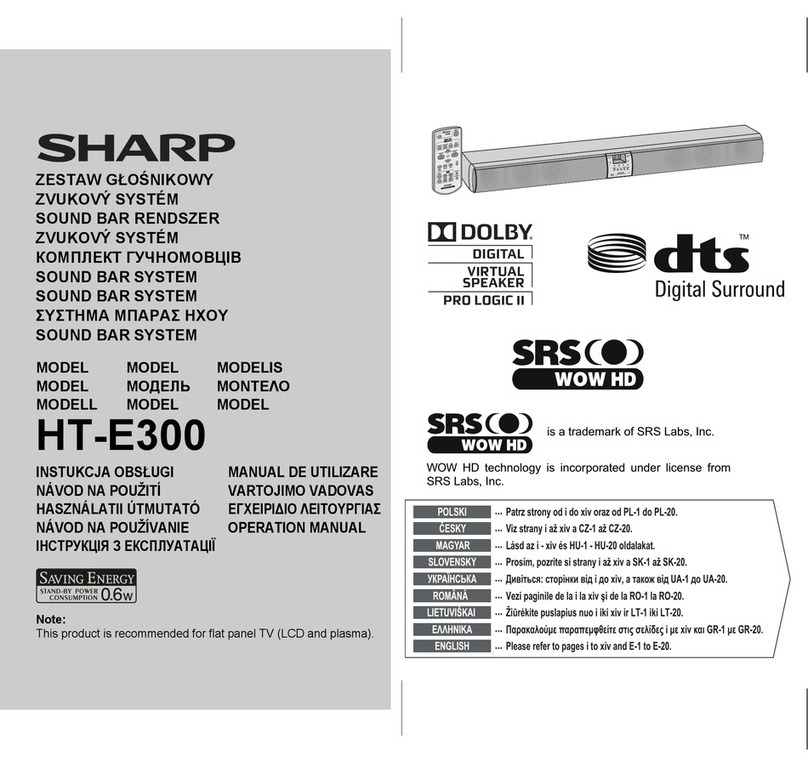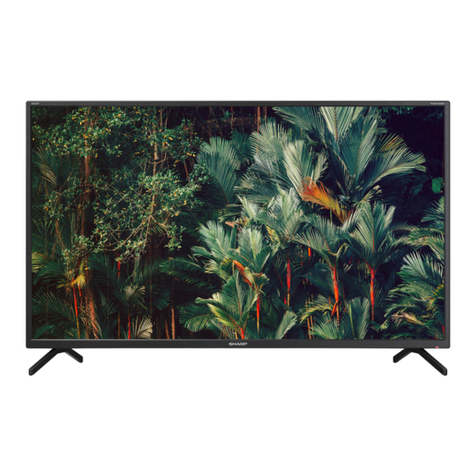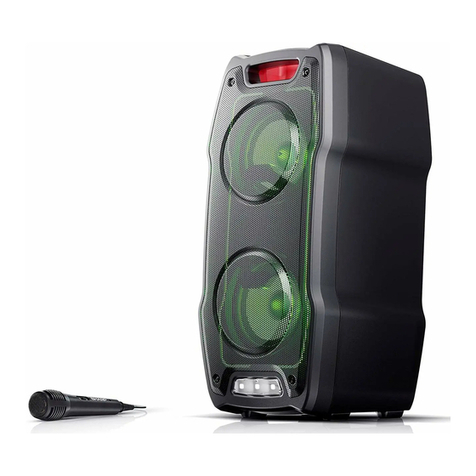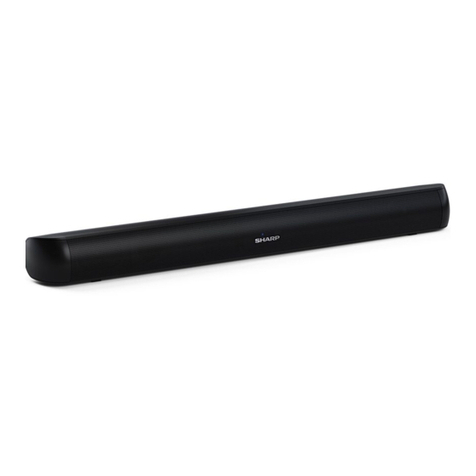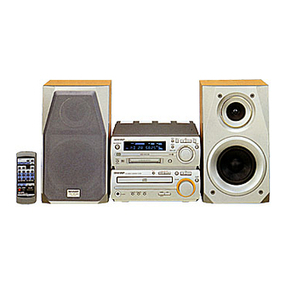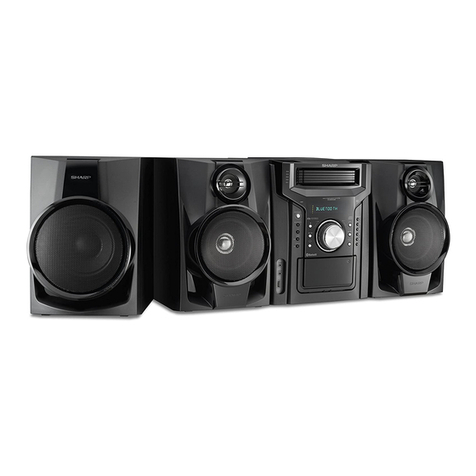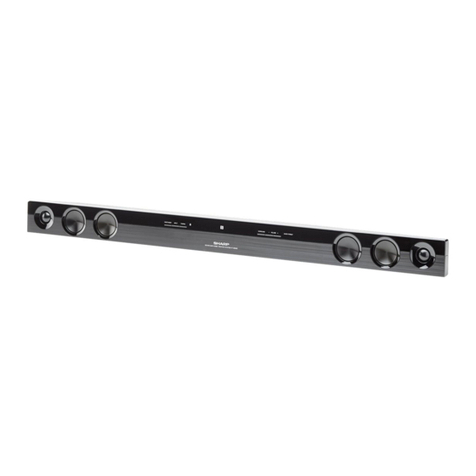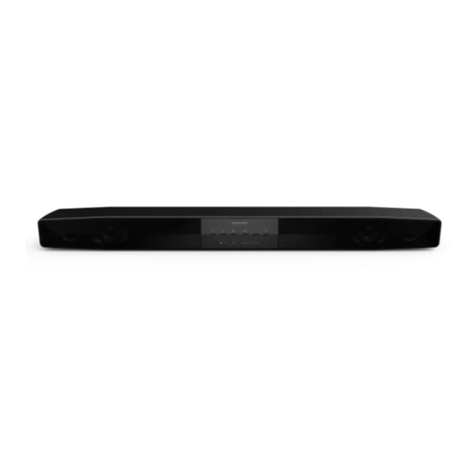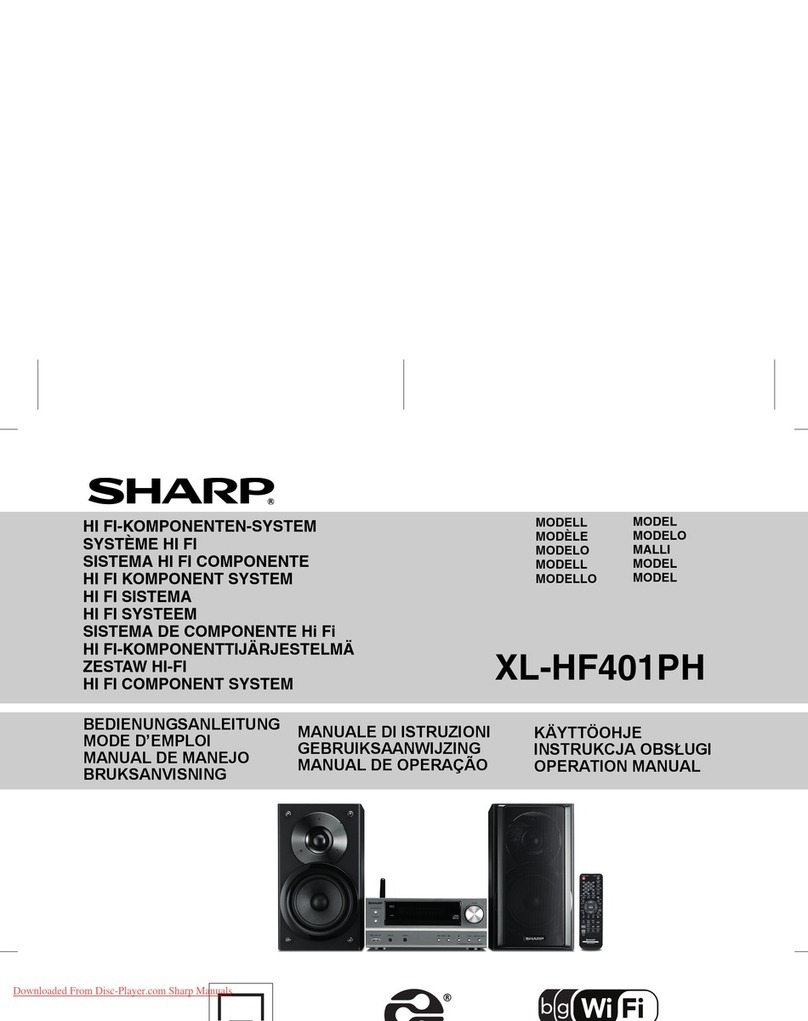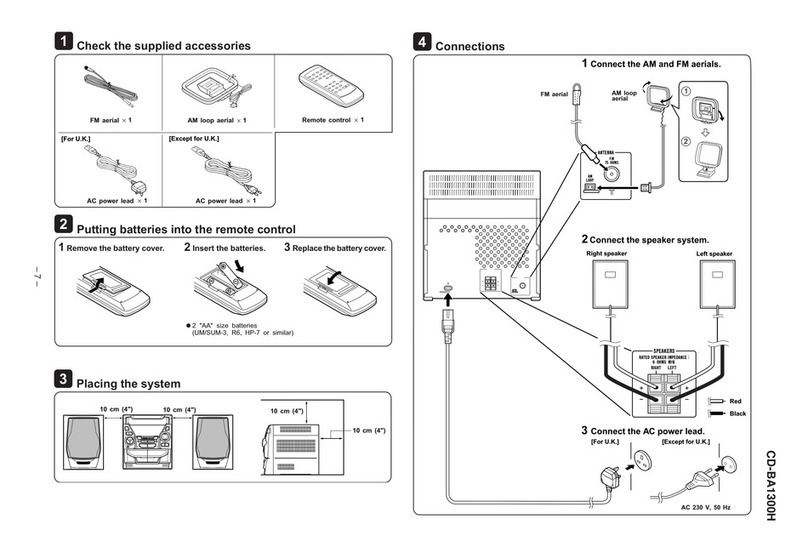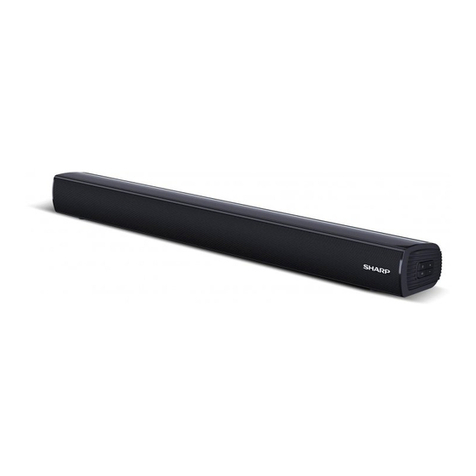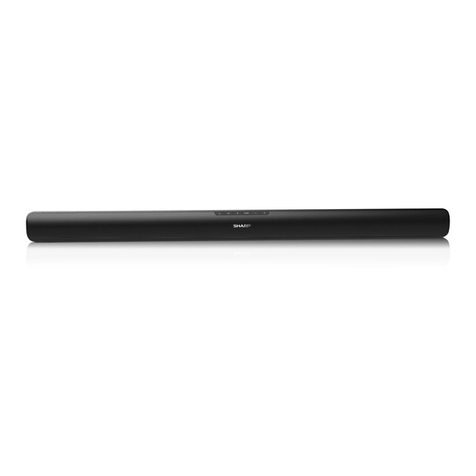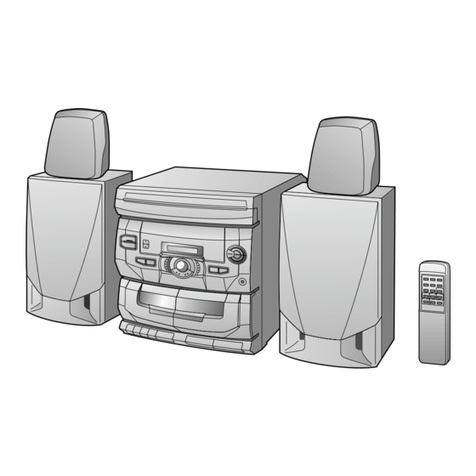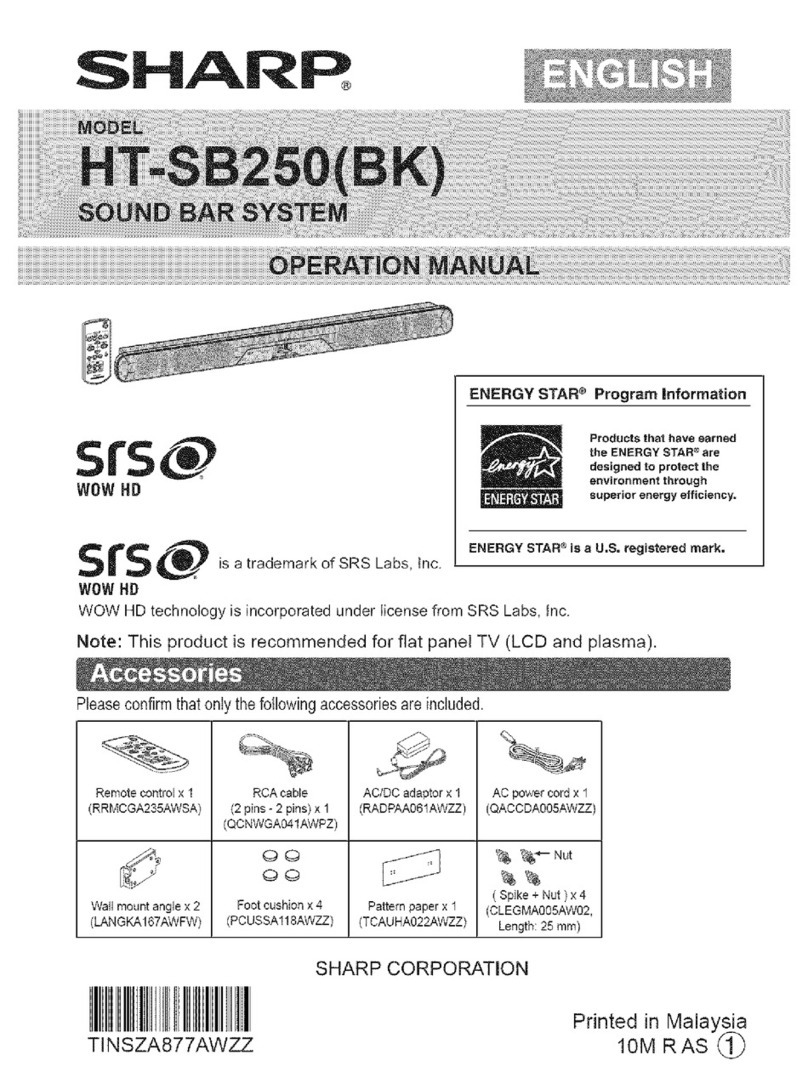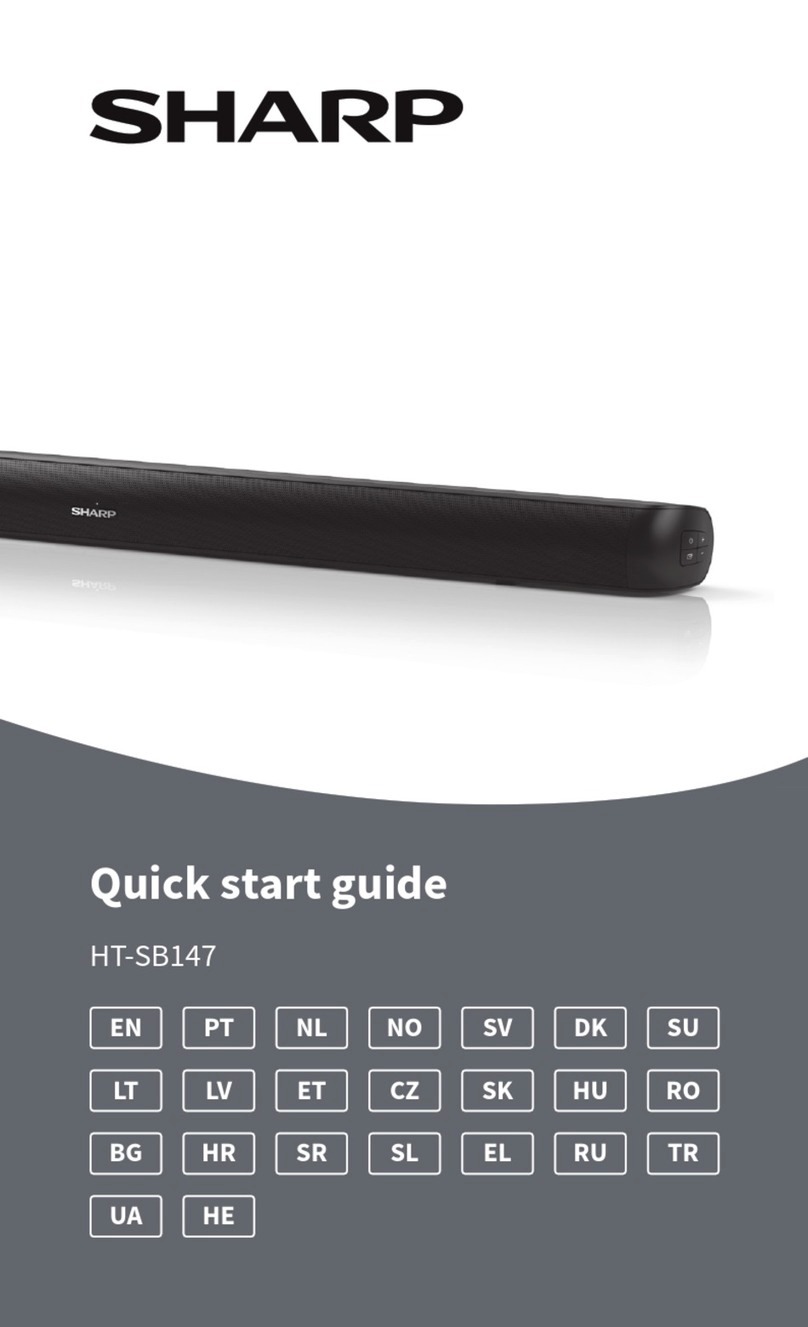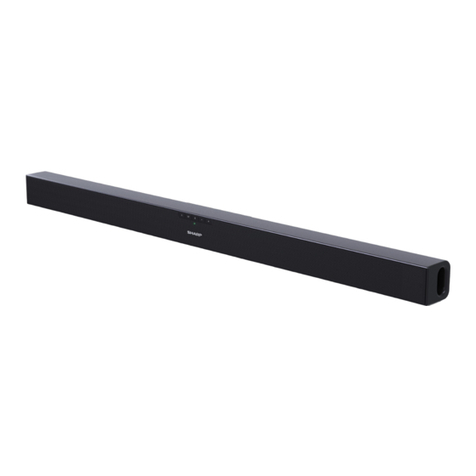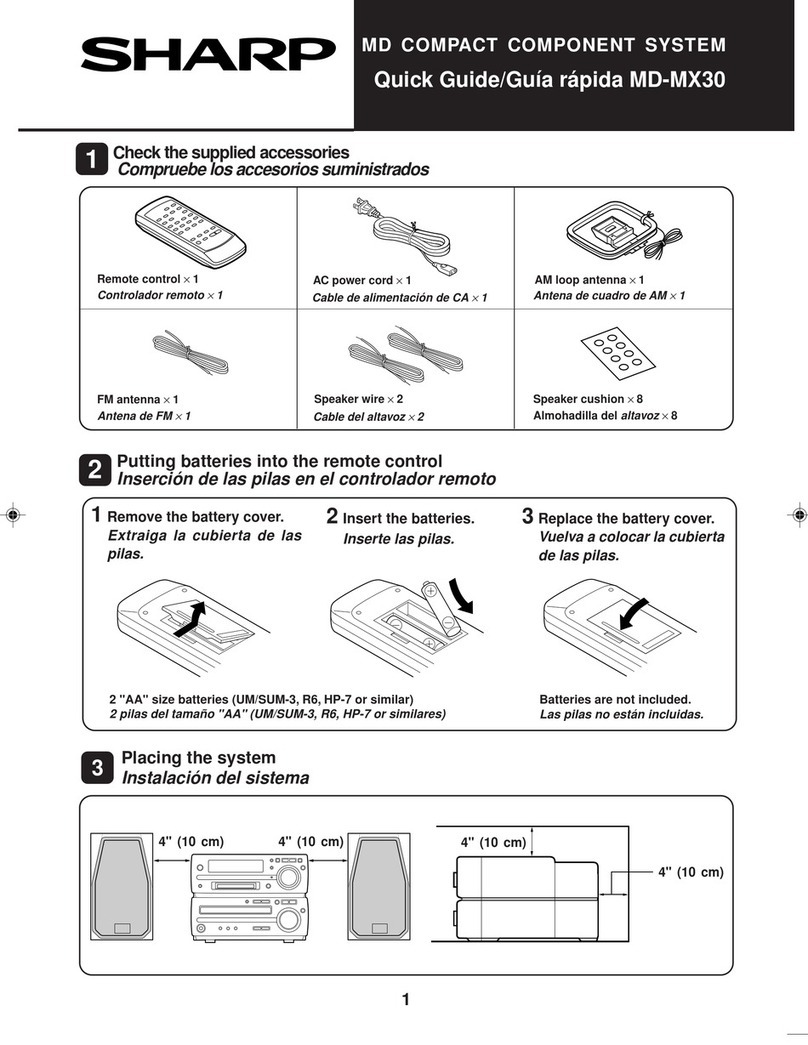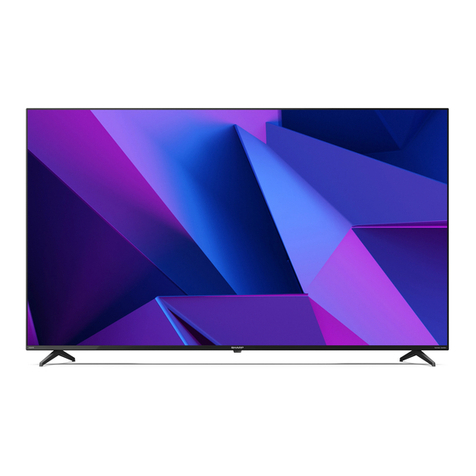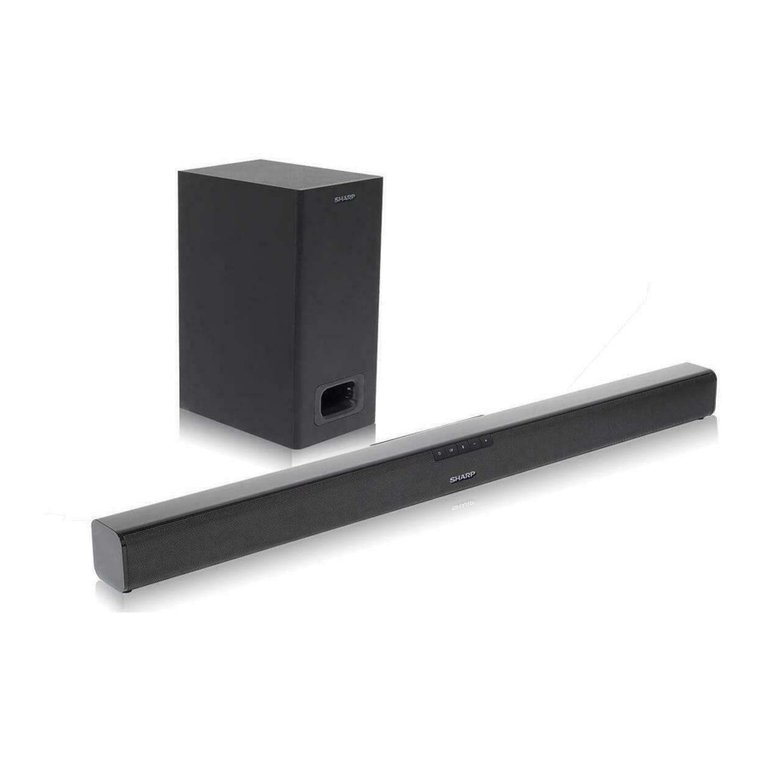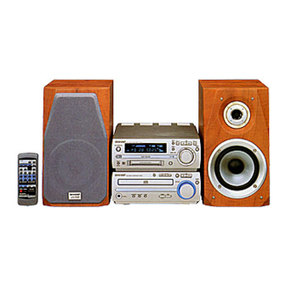CD-C478/478C
– 8 –
OPERATION MANUAL
SETTING THE CLOCK
1
Press the POWER button to turn the power off.
2
Press the CLOCK button.
3
Within 5 seconds, press the MEMORY button.
4
Turn the jog dial to select the time display mode.
"0:00" →The 24-hour display will appear.
(0:00 - 23:59)
"AM 12:00"→The 12-hour display will appear.
(AM or PM 12:00 - 11:59)
"AM 0:00" →The 12-hour display will appear.
(AM or PM 0:00 - 11:59)
●Note that this can only be set when the unit is first installed
or it has been reset..
5
Press the MEMORY button.
6
Adjust the hour by turning the jog dial.
●When the jog dial is turned one click clockwise, the time will
increase by 1 hour. When it is turned one click counterclock-
wise, the time will decrease by 1 hour.
Keep turning the jog dial to change the time continuously.
●When the 12-hour display is selected, "AM" will change auto-
matically to "PM".
7
Press the MEMORY button.
8
Adjust the minutes by turning the jog dial.
●When the jog dial is turned one click clockwise, the time will
increase by 1 minute. When it is turned one click counterclock-
wise, the time will decrease by 1 minute.
Keep turning the jog dial to change the time continuously.
●The hour setting will not advance even if minutes advance from
"59" to "00".
9
Press the MEMORY button.
●The clock starts operating from "0" seconds.
(Seconds are not displayed.)
Note:
●In the event of a power failure or when the AC power cord is
disconnected, the clock display will go out.
When the AC power supply is restored, the clock display will
flash on and off to indicate the time when the power failure
occurred or when the AC power cord was disconnected.
If this happens, follow the procedure below to change the clock
time.
To change the clock time:
When the unit is off:
➀Press the MEMORY button.
➁Perform steps 6 - 9 above.
When the unit is on:
➀Press the CLOCK button.
➁Within 5 seconds, press the MEMORY button.
➂Perform steps 6 - 9 above.
To see the time display:
Press the CLOCK button.
●The time display will appear for about 5 seconds.
To change the time display mode:
➀Perform steps 1 and 2 in the section "RESETTING THE MI-
CROCOMPUTER", on page 28.
➁Perform steps 1 - 9 above.
POWER
CLOCK
Jog dial
MEMORY TUNING
( )
In this example, the clock is set for the
12-hour (AM 12:00) system.
0:00 AM 12:00 AM 0:00
2
3
4
5
6
7
8
9
RESETTING THE MICROCOMPUTER
Reset the microcomputer under the following condi-
tions:
●To erase all of the stored memory contents (clock and
timer settings, and tuner and CD presets).
●If the display is not correct.
●If the operation is not correct.
1
Press the POWER button to turn the power off.
2
Press the POWER button while holding down the
button and the EQUALIZER/DEMO button.
Caution:
●The operation explained above will erase all data stored
in memory including clock and timer settings, and tuner
and CD presets.
POWER
EQUALIZER
/DENO
